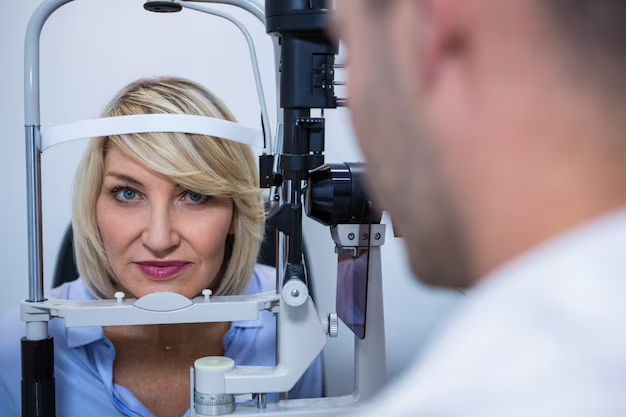Understanding and Managing Cataracts: A Comprehensive Guide
Cataracts, a common eye condition that primarily affects older adults, might be more prevalent than you think. With numerous misconceptions surrounding their onset and treatment, understanding cataracts is crucial for vision health. In this article, we’ll explore how cataracts form, their symptoms, and the current methods used for managing and removing them, helping you gain clarity on this clouded topic.
What Are Cataracts?
Cataracts refer to the clouding of the eye's natural lens, which lies behind the iris and the pupil. Imagine looking through a fogged-up window—this is how many describe vision with advanced cataracts. Over time, this condition can lead to vision impairment if not properly addressed.
Causes and Risk Factors
While age is the most significant risk factor, other elements can contribute to cataract development:
- Genetics: Family history can play a role in your cataract risk.
- Lifestyle Choices: Smoking, excessive alcohol consumption, and prolonged sun exposure can increase risk.
- Medical Conditions: Diabetes and hypertension are known contributors.
- Medications: Long-term use of steroids may promote cataract formation.
Signs and Symptoms
Recognizing the early signs of cataracts aids in early diagnosis and management:
- Blurred Vision: A common initial symptom that worsens over time.
- Glare Sensitivity: Difficulty seeing in bright light.
- Night Vision Issues: Trouble seeing at night, often accompanied by glare from headlights.
- Color Changes: Fading or yellowing of colors.
Diagnosing Cataracts
Optometrists or ophthalmologists typically diagnose cataracts during a comprehensive eye exam. This may include:
- Visual Acuity Test: Assesses how well you can read from a distance.
- Slit-Lamp Examination: Allows detailed examination of the lens and other eye structures.
- Retinal Exam: Provides insights into the retina's health and any cloudiness on the lens.
Available Treatment Options
While early-stage cataracts may require regular monitoring, advanced stages often lead individuals to consider surgical options. Here’s an overview of current treatments and preventive measures:
Non-Surgical Management
For early cataracts, some steps can help manage symptoms:
- Improved Lighting: Utilizing brighter lights at home or work.
- Eyewear Adjustments: Prescription glasses or contacts might improve vision.
- Anti-glare Lenses: Reduce glare from sunlight and artificial lighting.
- Lifestyle Modifications: Quitting smoking and reducing alcohol intake.
Cataract Surgery
When cataracts significantly affect life quality, surgery is the mainstay treatment—a common and safe procedure with high success rates.
Surgery Insights
Procedure: Involves removing the clouded lens and replacing it with a clear artificial lens.
Types of Cataract Surgery:
- Phacoemulsification: A small incision technique using ultrasound waves to break up the lens for removal.
- Extracapsular Surgery: May be used in advanced cases and involves a larger incision.
Recovery: Typically, patients experience considerable vision improvement within a few days.
Myths About Cataracts
Let’s debunk some common myths surrounding cataracts:
Myth 1: "Cataracts can grow back after surgery."
- Truth: Cataracts cannot return since the natural lens is removed. Occasionally, the lens capsule holding the artificial lens can become cloudy, but this can be easily corrected.
Myth 2: "Cataracts only develop in elderly people."
- Truth: While common in older adults, cataracts can develop at any age due to genetic or health factors.
Preventing Cataracts
While not all cataracts are preventable, certain steps can help reduce risk:
- Regular Eye Exams: To catch changes in vision early on.
- Healthy Diet: Rich in antioxidants, which can protect eye health.
- UV Protection: Wearing sunglasses that block UV rays.
- Manage Health Conditions: Keep diabetes and hypertension under control.
Key Takeaways and Tips 📌
Here’s a quick summary to keep in mind:
- Lifestyle Matters: Healthy habits can reduce cataract risk.
- Stay informed: Recognize symptoms to seek timely help.
- Consider Surgery: When cataracts interfere with daily tasks, surgical options are available.
- Consult Regularly: Regular eye visits help monitor and manage eye health effectively.
Frequently Asked Questions
Can lifestyle changes reverse cataracts?
While lifestyle changes can mitigate the symptoms or slow progression, they won’t reverse cataracts. Only surgical intervention can remove them completely.
Is cataract surgery painful?
Cataract surgery is generally not painful as local anesthesia is used. Post-operative discomfort is usually minimal.
How long does it take to recover from cataract surgery?
Most individuals notice improvement within a few days, but full healing can take a few weeks. Following post-operative instructions is essential for recovery.
Are there any risks associated with cataract surgery?
Like any surgery, cataract procedures carry some risks, such as infection or lens positioning issues. However, complications are relatively rare with advanced techniques and care.
Cataracts might seem daunting, but awareness and understanding significantly aid in handling this condition. Remember, maintaining regular check-ups, adopting a healthy lifestyle, and seeking timely treatments are critical elements in managing your eye health effectively. By being proactive and well-informed, you can preserve your vision and enjoy life’s vibrant colors for years to come.
